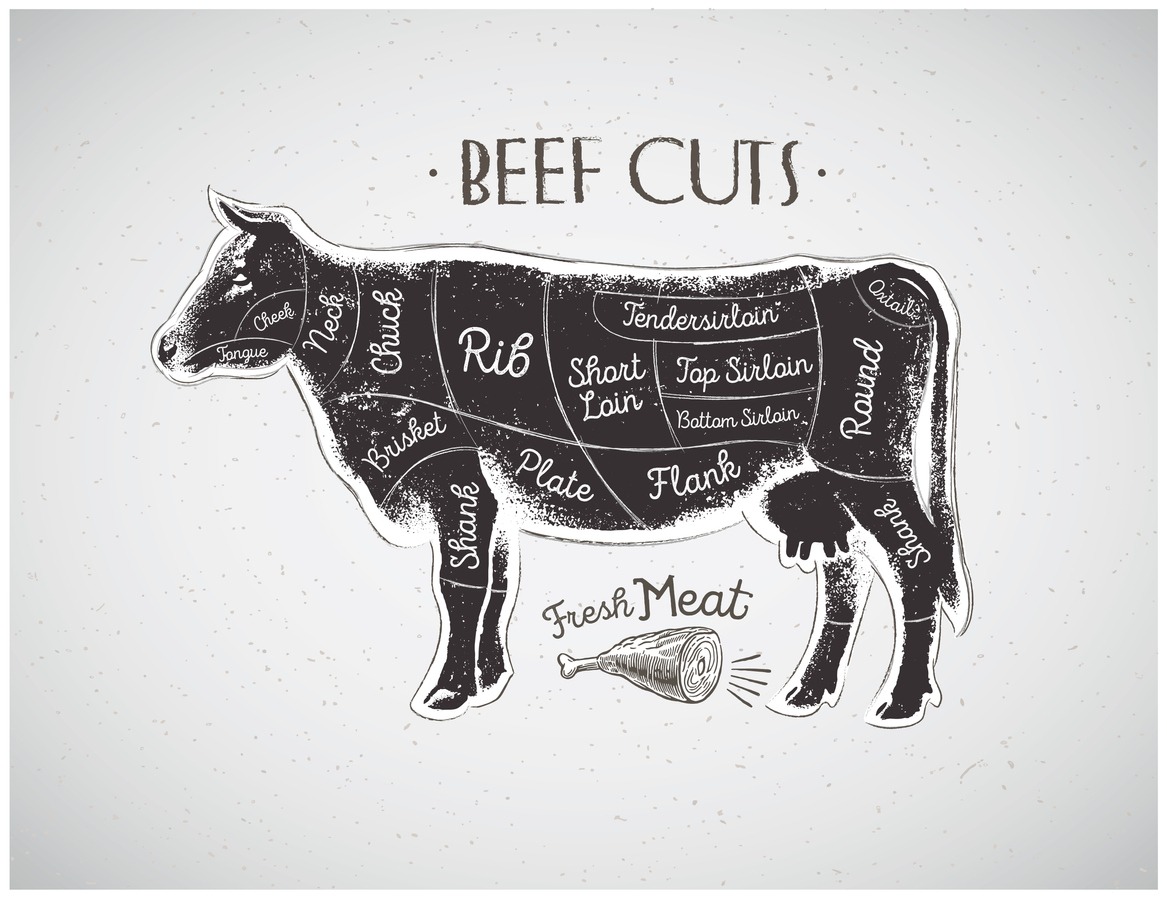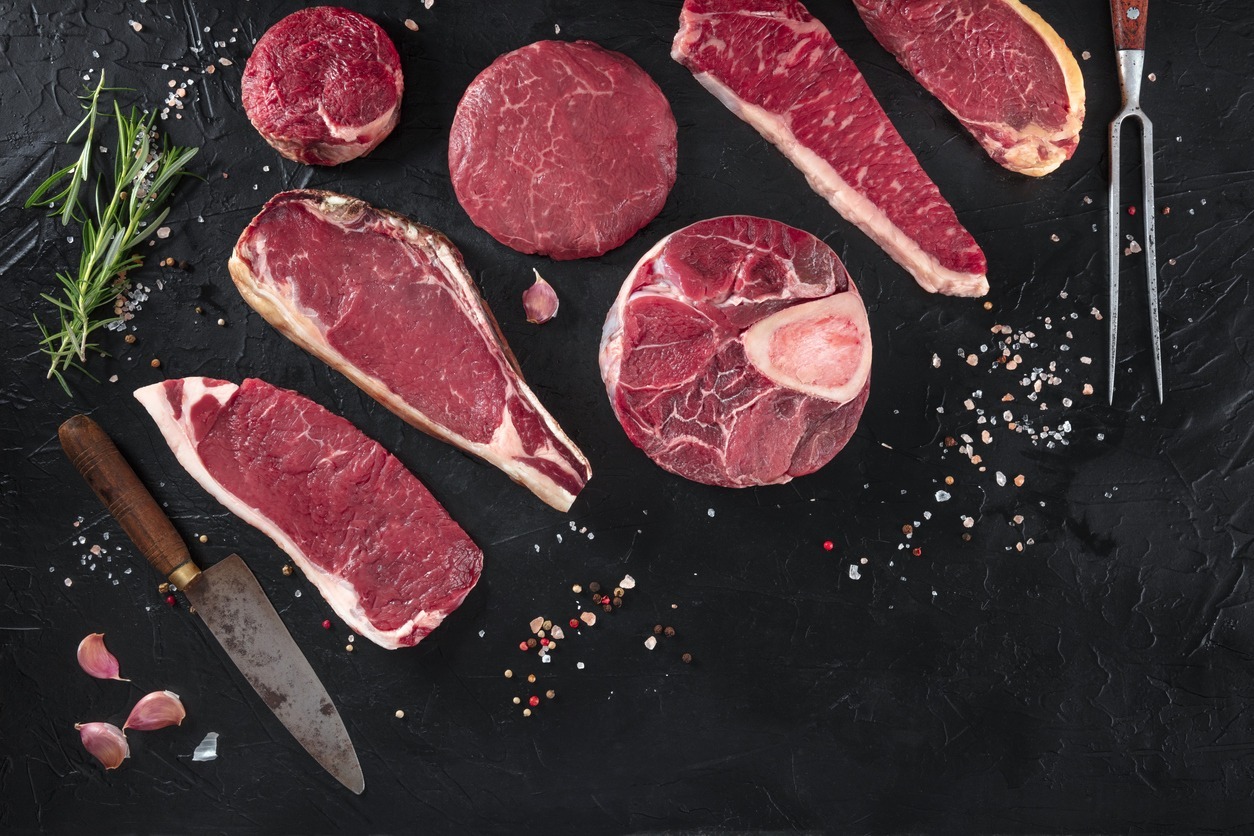The gold standard for the best steak house in Calgary lies in the best cuts of steak. These cuts come from various cow parts, divided into eight main cuts. Depending on where your cut comes from, you can expect different degrees of tenderness that can impact the quality of a steak. See how these various steak cuts compare to one another so that next time you order one, you know what steak cut would best suit your tastes!
Chuck
Chuck comes from the cow’s shoulder. Typically, this cut has the shape of a rectangle that resembles the number seven. It’s a very flavorful region that can be cut and prepared in many ways, but it’s also typically a firmer cut of beef because of how thick it can be. Due to its versatility and cheap cost, you’re probably already familiar with the taste of chuck steak. It’s a popular cut since you can use it to be cooked for different meals. The types of portion cuts you can find for chuck are ground chuck (hamburgers), chuck short ribs, shoulder tender medallions, chuck pot roast, shoulder steak, flat-iron steak, and stew meat.
Rib
This area is rather self-explanatory. But to be specific, this cut comes from the cow’s ribs and backbone. You can get familiar with this particular cut of steak by having either short ribs, ribeye steak, cowboy steak, ribeye roast, ribeye fillet, or back ribs. All of them exhibit this part’s distinct flavour as well as their fatty marbling and tenderness.
Sounds pretty mouth-watering already, doesn’t it? If so, you’re not alone with that sentiment since numerous people love it, which results in higher demand and rib cuts being a little pricier. Opting to cook this particular cut of steak at home can be a good idea instead. If you plan to do so, the best cooking method lies in slow-cooking this cut instead of grilling it for titillating tenderness!
Loin
Despite how expensive it can be, the loin part is quite popular. Why is that? Well, since the loin is located directly behind the ribs, the little muscle it has makes it more tender. Yet, two notable cuts in the loin region differentiate – that’s sirloin and short loin. Sirloin is considered the least tender compared to short loin, but depending on who you ask, it can be argued to be the more flavourful of the two.
Meanwhile, the short loin is closer to the cow’s centre, which gives it more tenderness. You can see this cut in steaks like NY strip, T-Bone, porterhouse, tenderloin fillet, and fillet mignon. However, both are similar because they both can dry out quickly. That’s why it’s recommended not to slow cook and best enjoyed cooked or fried.
Round
If you’re looking for a more inexpensive cut, consider going for a round cut steak. The reason this is the case comes from the fact that this cut is leaner because it’s located near the cow’s hind legs. However, this particular cut can be tricky to cook, and it’s suggested to look into how to cook it properly. There are only certain cook methods you can do depending on the specific cut. If you bring home top, bottom, and eye round cuts, it’s best to cook those under high heat. Yet, with rump and eye roast, you will want to slow-cook them instead.
Flank
For a tougher steak, a flank cut is rather flavourful! You can find this cut just below the loin, which will be closer to a cow’s lower chest or abdominal muscle. Unlike other leaner cuts that are inexpensive, a flank cut has become more popular over the years, and its price is higher than other tougher cuts. With flank steak, you can’t go wrong with any cooking method. It can be suitable for grilling, roasting, broiling, or sautéing. However, since it is a lean cut, it can still be susceptible to dryness. When cooking this particular cut, it’s recommended to cook it under medium heat to ensure it doesn’t overcook.
Short Plate & Brisket
Often grouped with the brisket beef region, short plate cuts are found near the cow’s stomach, while the brisket is the cow’s breast. Both are known to be fatty with a tough texture. However, you can find short plate cuts from skirt steak, hanger steak, beef bacon, pastrami, short ribs and ground beef. Meanwhile, brisket is best during a barbeque since it’s best enjoyed when tenderised and marinated. In which case, it’s also best prepared through slow cooking to reach melt-in-your-mouth tenderness.
Shank
The shank cut in front of a cow’s forearm is considered the toughest and cheapest cut from a cow. As a result, it’s known to be sinewy and dry, which makes it fairly unpopular and has a low demand. However, if you want to try to make this inexpensive, tough steak tasty, there are ways you can utilise and enjoy it. Shank is good for beef stock, stew, or lean ground beef. If you’re planning on preparing shank, keep in mind its dry nature and cook it for a long time in moist heat.
The location of a cut of steak can dictate so much – flavour, texture, and even price. By knowing what cuts there are, you can figure out what parts best suit your palate and make a more informed decision the next time you walk into a steakhouse!


